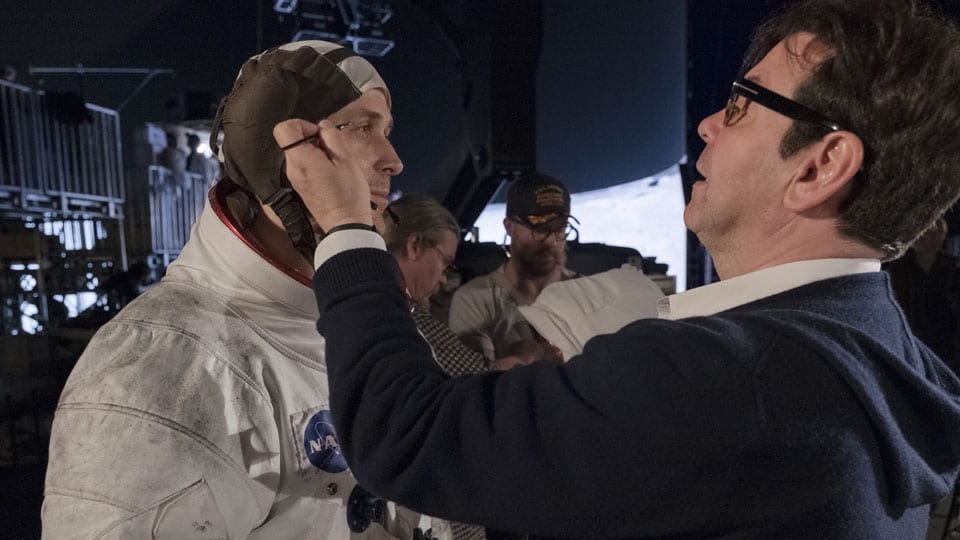After going to graduate school for directing at UCLA, Amy Adrion struggled to get breaks in motion pictures when she discovered that the ACLU began an investigation into systemic discrimination against women directors in Hollywood. “It seemed like maybe something could change,” Adrion noted. “I wanted to document that.”
Producing the project with her husband, Adrion invested in camera equipment and started reaching out to woman directors with whom she had previously worked, including Miranda July and Catherine Hardwicke, for whom Adrion’s UCLA advisor had edited films. Both immediately agreed to participate in the documentary. “We tried to get to women who have somehow battled and made their way through as directors,” Adrion explained. “Almost all of them are still very much hustling who have had success.”
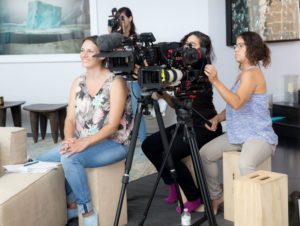
With questions for her subjects about getting a first film made, breaking into television, and developing a fulfilling career as a director, Adrion began amassing interviews for what became Half the Picture that propelled the feature-length project to new heights. She and her husband, David Harris, chose the title to their film as it evoked the idea that filmmaking culture was missing something. “There’s only one segment of the population who are continuing to tell all of our stories,” Adrion remarked.
Surprisingly, relevant answers to her questions drove the project into unexpected directions. With regards to Hardwicke, after she directed the first Twilight film for Summit Entertainment, she chose not to direct the sequels and had issues getting hired for top-flight films at other companies. “Those opportunities didn’t come to her even after the huge success of Twilight,” said Adrion.
Noteworthy was a similar fate to Sam Taylor-Johnson who directed the first Fifty Shades of Grey film. “Even those women have not continued to get great opportunities,” Adrion stated of other female directors in her project who had directed box office bonanzas. “That defies logic; those films rocked the landscape because they are such monster successes.”
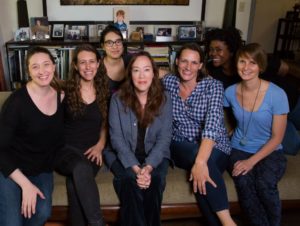
Despite her discovery of illogical developments in the plight of female directors, Adrion remained optimistic. “There is not a lot of statistical evidence which shows that we should be optimistic,” she stated, though she added that things might finally be transforming. “Wonder Woman was a game changer for women directors. They’ve made three seasons of Queen Sugar and have hired all women directors, most of whom have not worked in TV before—many of whom have been hired for independent films. Now that they’ve done those episodes, their careers have taken off. It’s a testament to how much talent is out there.”
In the recent past, female directors who strove to garner careers had to be exceptional and tough, according to Adrion. “They are pretty unique women to have broken through the system at that time,” she said. “It was that much harder in the 1970s and 1980s. The women who broke through had to be one of the guys—and ate a lot of bullshit—and proved that they could hang and direct like a man.”
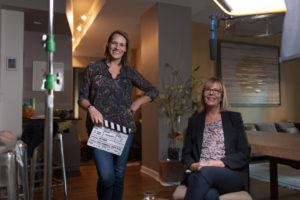
In those formative decades, women who directed studio films did see one another as rivals. In two examples, Fast Times at Ridgemont High was directed by Amy Heckerling in 1982 while Martha Coolidge directed Valley Girl in 1983. “There was only one seat at the table for a woman,” Adrion conveyed. “Other women directors were your competition. Those women who made it back in the day, that was a tough system to break into.”
During her research to prepare Half the Picture, Adrion learned that the number of women directing studio films has not had any significant improvement. “Women are directing 4% of studio films,” she said, stating that one challenge to the media conglomerates is to commit to working with a minimum of one female director every 18 months. “You just hope all of these initiatives and efforts open up opportunity. The way of doing business is very entrenched—there’s a lot of resistance to change.”
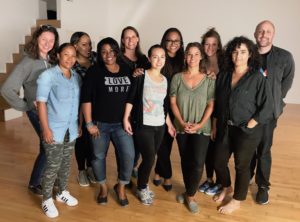
Among the many myths that prevent women from getting jobs, Adrion cited the belief that there are not enough qualified women who have experience in the panoply of film genres. “Every year, there are tons of women directors who have directed every genre of film and are clamoring at the door for these opportunities,” she related. “They are not on the list that make it up the food chain to studios and producers. The women are there but are not up for the bigger opportunities. They can make big films and lead big crews. If you challenge those myths, they fall apart.”
Another myth has been that women do not want to direct science-fiction. “You should ask women directors—more than half are interested in these genres,” Adrion professed, noting that Wonder Woman was directed by Patty Jenkins. “If people took the time, they’d find that there’s a wide spectrum of interest. Kimberly Peirce said that she’d love to make a superhero film. Somebody give her a superhero movie! You can take a familiar genre and turn it on its head—it feels so fresh and exciting and new. You don’t want see the same movie over and over.”
In Half the Picture, Adrion did not shy away from including the reality of being a mother in the business. “Many of the women we interview are very honest about how that can be a challenge,” Adrion revealed. “They are all committed to find a way of working through it. Many friends who I have who are emerging [as filmmakers] very much want those opportunities. We want those jobs, and we will make it work.”
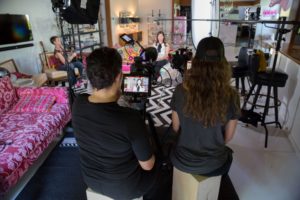
After 18 months of principal photography, encompassing interviews with 30 women directors and 20 journalists, Adrion toiled another 18 months in post-production on the film with editor Kate Hackett. In her endeavors on Half the Picture, Adrion felt a great responsibility to tell the stories of the people who she profiled. “This is my first feature film; they took a risk in sitting down with me,” said Adrion. “This is a window into who these women are: incredibly talented, passionate, and funny—plus many others like them. I am so grateful to all of the brave women who spoke out—it’s so dangerous to do so. It has created space for other women to speak up.”
Half the Picture can be found on the STARZ cable channel and at https://www.starz.com/us/en/movies/40285





